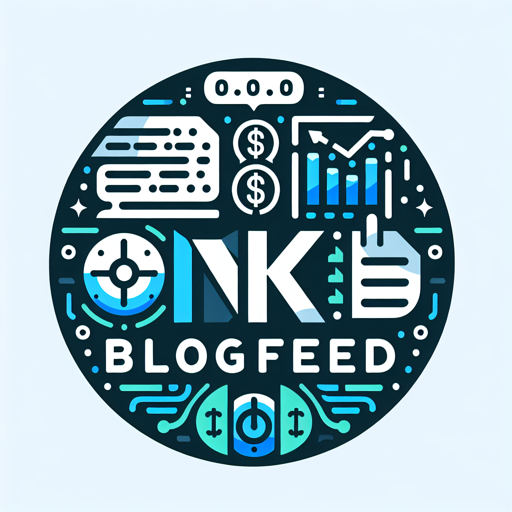Deep breathing techniques are often overlooked yet hold immense power in managing stress. When you find yourself overwhelmed, taking a moment to focus on your breath can create a significant shift in your mental state. By consciously inhaling and exhaling, you activate your body’s relaxation response, which counteracts the stress-induced fight-or-flight reaction.
This simple act can lower your heart rate, reduce blood pressure, and promote a sense of calm. You may notice that even just a few minutes of deep breathing can help clear your mind and bring you back to the present moment. Incorporating deep breathing into your daily routine can be transformative.
You might start by setting aside a few minutes each day to practice. Find a quiet space where you can sit comfortably, close your eyes, and focus solely on your breath. As you inhale deeply through your nose, allow your abdomen to expand fully.
Hold that breath for a moment before exhaling slowly through your mouth. This rhythmic pattern not only calms your nervous system but also helps you cultivate mindfulness. Over time, you may find that this practice enhances your overall well-being, making it easier to navigate life’s challenges with a clearer mind and a more centered spirit.
Key Takeaways
- Deep breathing techniques can help reduce stress and promote relaxation by calming the nervous system.
- Mindfulness meditation can be an effective tool for managing stress by increasing self-awareness and promoting a sense of calm.
- Regular exercise can help reduce stress by releasing endorphins and improving mood, as well as providing a healthy outlet for stress relief.
- A healthy diet plays a crucial role in managing stress by providing the body with essential nutrients and supporting overall well-being.
- Quality sleep is essential for stress management as it allows the body and mind to rest and recharge, promoting resilience to stress.
- Social connections and support from friends, family, and community can provide a sense of belonging and help reduce the impact of stress on mental and emotional well-being.
Mindfulness Meditation for Stress Relief
Mindfulness meditation is a powerful tool for stress relief that encourages you to be present in the moment without judgment. By focusing on your thoughts, feelings, and bodily sensations, you can develop a greater awareness of how stress manifests in your life. This practice allows you to observe your thoughts as they arise, rather than becoming entangled in them.
You may find that by acknowledging these thoughts without reacting, you create space for a more balanced perspective on the challenges you face. To begin your mindfulness meditation practice, find a comfortable position where you can sit or lie down without distractions. Close your eyes and take a few deep breaths to ground yourself.
As you settle into the moment, focus on your breath or a specific mantra. If your mind begins to wander—which it inevitably will—gently guide it back to your point of focus. This process of returning to the present moment is where the magic happens; it trains your mind to become less reactive and more resilient in the face of stress.
Over time, you may notice that this practice not only reduces stress but also enhances your overall emotional well-being.
The Benefits of Regular Exercise for Stress Reduction

Engaging in regular exercise is one of the most effective ways to combat stress. Physical activity releases endorphins, the body’s natural mood lifters, which can help alleviate feelings of anxiety and depression. When you exercise, whether it’s through running, dancing, or practicing yoga, you create an opportunity for your body to release pent-up energy and tension.
This release can lead to an immediate sense of relief and accomplishment, making it easier for you to manage stressors in your life. Moreover, exercise provides a structured way to take a break from daily pressures. You might find that dedicating time to physical activity allows you to step away from work or personal obligations, giving your mind a chance to reset.
Whether you prefer hitting the gym or taking a leisurely walk in nature, the key is consistency. By establishing a regular exercise routine, you not only improve your physical health but also build resilience against stress over time. You may discover that as you become more physically active, your ability to cope with life’s challenges improves significantly.
The Importance of a Healthy Diet in Managing Stress
Your diet plays a crucial role in how you manage stress and overall mental health. The foods you consume can directly impact your mood and energy levels. A balanced diet rich in whole foods—such as fruits, vegetables, whole grains, lean proteins, and healthy fats—provides the nutrients necessary for optimal brain function.
When you nourish your body with wholesome foods, you’re better equipped to handle stressors that come your way. Conversely, indulging in processed foods high in sugar and unhealthy fats can lead to fluctuations in energy and mood swings. You may notice that after consuming junk food, feelings of lethargy or irritability can set in, making it harder to cope with stress.
To foster a healthier relationship with food, consider planning meals that prioritize nutrient-dense options. Experimenting with new recipes or incorporating more plant-based meals into your diet can be both enjoyable and beneficial for your mental well-being. By making mindful choices about what you eat, you empower yourself to manage stress more effectively.
The Role of Quality Sleep in Stress Management
Quality sleep is often underestimated when it comes to managing stress effectively. When you’re well-rested, you’re better equipped to handle daily challenges and make sound decisions. Sleep deprivation can lead to increased irritability and difficulty concentrating, which can exacerbate feelings of stress.
Prioritizing sleep hygiene—such as maintaining a consistent sleep schedule and creating a calming bedtime routine—can significantly improve the quality of your rest. You might consider creating an environment conducive to sleep by minimizing distractions and ensuring your bedroom is dark and cool. Limiting screen time before bed can also help signal to your body that it’s time to wind down.
Engaging in relaxing activities such as reading or gentle stretching can prepare your mind for restful sleep. By recognizing the importance of quality sleep in managing stress, you empower yourself to cultivate healthier habits that support both your physical and mental well-being.
Finding Support Through Social Connections

The Power of Sharing and Belonging
Sharing your thoughts and experiences with others fosters a sense of belonging and understanding that can be incredibly healing. You might consider reaching out to friends or loved ones when you’re feeling overwhelmed; simply talking about what you’re going through can lighten the emotional load. Additionally, engaging in social activities—whether it’s joining a club or participating in group exercises—can enhance your sense of community and provide opportunities for connection.
Nurturing Relationships for a Stronger Support System
By nurturing these relationships, you create a network of support that not only helps you cope with stress but also enriches your life overall. In conclusion, managing stress effectively requires a multifaceted approach that encompasses deep breathing techniques, mindfulness meditation, regular exercise, a healthy diet, quality sleep, and strong social connections. By integrating these practices into your daily life, you empower yourself to navigate challenges with resilience and grace.
Prioritizing Self-Care for a Balanced Life
Remember that it’s okay to seek help when needed; prioritizing self-care is essential for maintaining balance in an often chaotic world. Embrace these strategies as tools for enhancing your well-being and fostering a more peaceful existence amidst life’s inevitable ups and downs.
If you are looking for more tips on stress reduction, you may want to check out this article on Striking a Balance: Strategies for Managing Work and Life. This article provides valuable insights on how to maintain a healthy balance between your professional and personal life, which can ultimately help reduce stress levels. By implementing some of the strategies mentioned in the article, you may find yourself feeling more relaxed and focused in both areas of your life.




